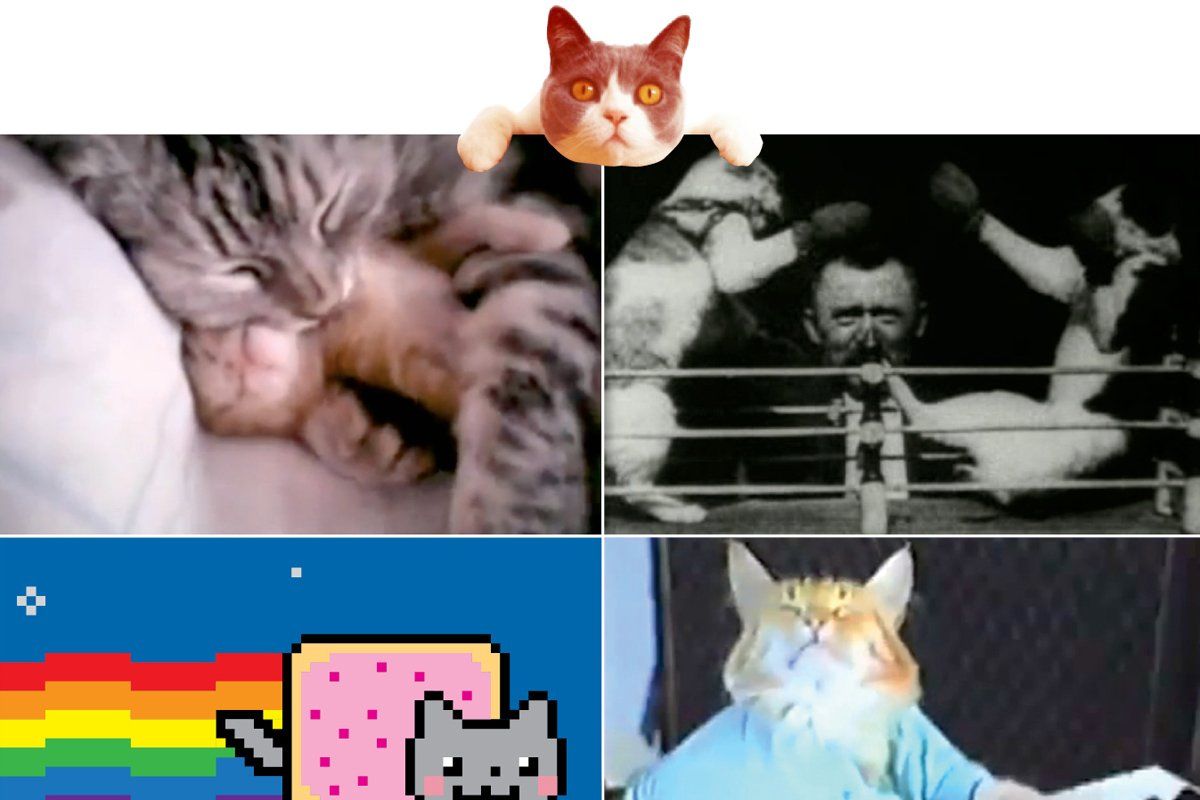
On Aug. 30, the well-respected Minneapolis institution the Walker Art Center will hold the first-ever film festival of Internet cat videos. The screenings, to be held on the giant lawn across from the city's iconic Spoonbridge and Cherry sculpture by Claes Oldenburg and Coosje van Bruggen, are part of the Walker's summer series. And, for such YouTube classics as the sweatshirt-wearing Keyboard Cat, it's anticipating a blockbuster turnout.
What? Kitten-in-a-basket movies? It's adorable—but is it art?
It's "more of a social experiment," says the organizer and a Walker programming director, Katie Hill. It was started to see whether the online cat community would even go outside, says Hill, who has two cats herself. But the undeniable success of the project—10,000 votes for favorites, a sponsorship by Animal Planet, which will broadcast the crowd favorite, even a plug from Fox News—may be a flag to other museums. The Walker's website had its highest traffic ever in the days following the announcement. Such traffic matters big to museums: in New York, the Museum of Modern Art is currently weighing a "MoMA insiders" website that would include additional content for a fee.
Why cats? There are plenty of YouTube videos out there of winsome dogs, giggling babies, even thoughtful chimps, but there's something about cats that translates into virality. Pop-culture theorists have thumb-sucked a variety of possible explanations: The juxtaposition of a noble, reserved animal with mundane tasks is inherently comical. Cats are good performers, they're relatively easy to film (Thomas Edison captured two upright cats boxing circa 1894), and they're ideally scaled for online close-ups. Or perhaps viewing their lumpy fuzziness just softens the experience of sitting at a computer all day. Whatever the case, "the Walker is on to something" when it targets "the ultra-devoted close-knit community of cat-video lovers," says veteran cat blogger Angie Bailey. Founder of the site Catladyland, her favorites are of kitties making loud "nom-nom-nom sounds while they are eating," she adds.
Some watchers of the video-art genre are surprised by the film festival's content, but not its popularity. Edward Win-kleman, Chelsea art dealer and director of the Moving Image art fair, New York's annual bazaar of video art, says the latest generation of artists has felt particularly comfortable with video. Christian Marclay's largely feline-free sensation The Clock, which counts down 24 hours with time-themed film clips, drew four-hour lines at Lincoln Center this summer.
This isn't the first time the high art/low art lines have been blurred. In 2010 New York's Guggenheim Museum hosted the YouTube Play Biennial—a juried contest of art and animation videos—with the winners screened on the institution's Frank Lloyd Wright façade. Meanwhile, top museums have increasingly become populist, with the Los Angeles County Museum of Art saluting Stanley Kubrick and MoMA lionizing Quentin Tarantino this fall.
But this cat-video festival is reaching a new high (or low) with its level of inclusion. Indeed, Hill notes that several established artists submitted videos, but that missed the point: content had to be available free on the Internet. Many of the felines included are more famous than their counterparts at the Walker: take, for example, Japanese superstar Maru, the genre's salt-and-pepper George Clooney, whose mesmerizing and minimalist climbing in and out of boxes has garnered in excess of 150 million views.
The Walker stresses that the festival isn't part of its film and video department, one of the oldest and biggest in the country, and that a museum curator isn't involved. Still, the presentation, even endorsement, by the museum of such downscale cat videos has some proponents of "real" video art a bit queasy. And, of course, there are more prosaic objections. Notes art dealer Winkleman: "I'm a dog person."
Alexandra Peers writes on culture in New York.
Editor's Note: An earlier version of this article incorrectly stated that the Spoonbridge and Cherry sculpture was created by Claes Oldenburg, when in fact it was created by Claes Oldenburg and Coosje van Bruggen. It has been updated to correct this error.
Uncommon Knowledge
Newsweek is committed to challenging conventional wisdom and finding connections in the search for common ground.
Newsweek is committed to challenging conventional wisdom and finding connections in the search for common ground.
About the writer
To read how Newsweek uses AI as a newsroom tool, Click here.








